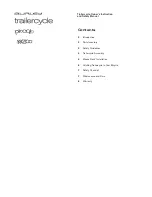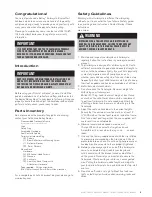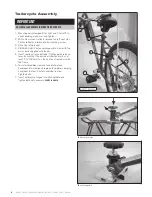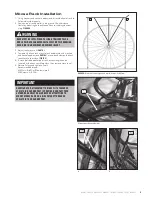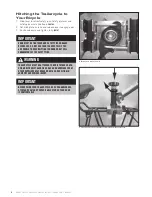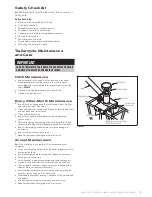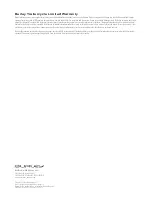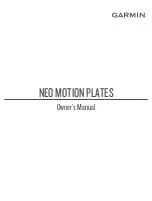
Congratulations!
You’ve just purchased a Burley
®
trailercycle. Every effort
has been made to ensure your purchase is of top quality
and proven design, ready to provide you and your family with
many years and miles of happy, safe trailercycling.
Please go to www.burley.com or contact us at (541) 687-
1644 or burley@burley.com to register your warranty
information.
Introduction
Before using your Piccolo
™
or Kazoo
™
, you must install the
pedals, handlebars, seat, reflector and flag, and then install
the Burley Moose Rack
™
to your bicycle for towing. Once you
properly secure the hitch, adjust the handlebar and seat and
perform a safety check, you’re ready to ride!
Parts Inventory
Do not proceed with assembly if any parts are missing;
contact your Authorized Burley Dealer.
Preassembled Trailercycle Frame
(Serial number located on bottom bracket)
Hitch
Safety Flag
Assembled Handlebar
Seat Post with Saddle
Trailercycle Hardware Bag:
(2) Pedals
(1) Rear Reflector, with Mounting Screw
(1) Reflector Bracket
(2) 5mm Screws
Moose Rack
™
Hardware:
(4) M5 Socket Head Screws
(4) Washers
(2) Locknuts
(2) Seat-Stay Band Clamps with
Attachment Hardware
Tools required:
Phillips screwdriver,
5/8” (16mm) wrench, 4mm & 5mm Allen wrenches
For a complete parts list and product diagram, please go to
www.burley.com
IMPORTANT
IT IS VERY IMPORTANT FOR YOU TO FAMILIARIZE YOURSELF
WITH YOUR TRAILERCYCLE BY READING THIS MANUAL
BEFORE USE. IF YOU HAVE ANY QUESTIONS, PLEASE CONTACT
YOUR AUTHORIZED BURLEY DEALER.
IMPORTANT
KEEP THIS MANUAL FOR MAINTENANCE, INSTALLATION, USE
AND SAFETY INFORMATION. USE ONLY THE MOOSE RACK
FOR TOWING THE PICCOLO OR KAZOO. ALWAYS ENSURE THAT
BOTH ADULT AND CHILD WEAR HELMETS.
Safety Guidelines
Bicycling with a trailercycle is different from bicycling
without one. It is essential that you follow all safety guide-
lines, warnings, and instructions. Contact Burley if these
instructions
are unclear.
1. Maintain and inspect your bicycle and trailercycle
regularly. Follow the instructions in your bicycle owner’s
manual.
2. The trailercycle is designed for children ages 4-10 with
sufficient coordination to pedal and adequate strength to
hold on to the handlebars tightly. If your child is physically
or mentally impaired, consult your physician as to
whether your child can safely ride. Take short rides; stop
frequently. Instruct your child to remain alert, and to keep
their feet on pedals and hands on handlebars at all times.
3. Both riders must wear helmets.
4. Do not overload the trailercycle. Maximum weight of a
child riding your trailercycle is
85 lbs./31.73 kg. Lead rider must weigh at least twice
as much as the child. Never allow a child or adolescent
to pull your trailercycle. Do not exceed weight limit by
attaching a trailer, rack, panniers, or other cargo to the
trailercycle.
5. Adjust the seat and handlebar to the correct heights.
Ensure that the minimum insertion mark, or at least 2
½” (63.5mm), on the seat post remains inside the frame.
Don’t use a seat post longer than the one supplied, as it
could result in an unstable bike.
6. Observe recommended speeds: maximum of
15 mph/24 km/h on smooth, straight roads, and
5 mph/8 km/h or less when turning or on uneven
roads.
7. Use only the factory-supplied wheel with the tire inflated
to pressure recommended on the tire side wall. Check
pressure before each use. Do not use higher-pressure or
knobby tires. Be sure axle nuts are properly tightened.
8. Before your passenger gets on and off the trailercycle,
come to a complete stop, straddle your bicycle and
hold it securely with the brakes locked and both feet
on the ground. Never rely on a kickstand to secure the
trailercycle. Practice with your child in an uncongested
area. Pulling the trailercycle adds length and weight to
your load; allow for ample time and distance to stop, start
and turn.
9. Do not use off-road, or at night without front and rear
lights on both cycles. Avoid sudden swerving, rocks and
curbs.
BICYCLING WITH A TRAILERCYCLE, AND BICYCYLING IN
GENERAL, CAN BE HAZARDOUS. FAILURE TO OBSERVE ANY
SAFETY GUIDELINES IN THIS MANUAL COULD RESULT IN
ACCIDENT, SERIOUS INJURY OR DEATH.
WARNING
B U R L E Y P I C C O L O A N D K A Z O O O W N E R ’ S I N S T R U C T I O N A N D S A F E T Y M A N U A L
3


